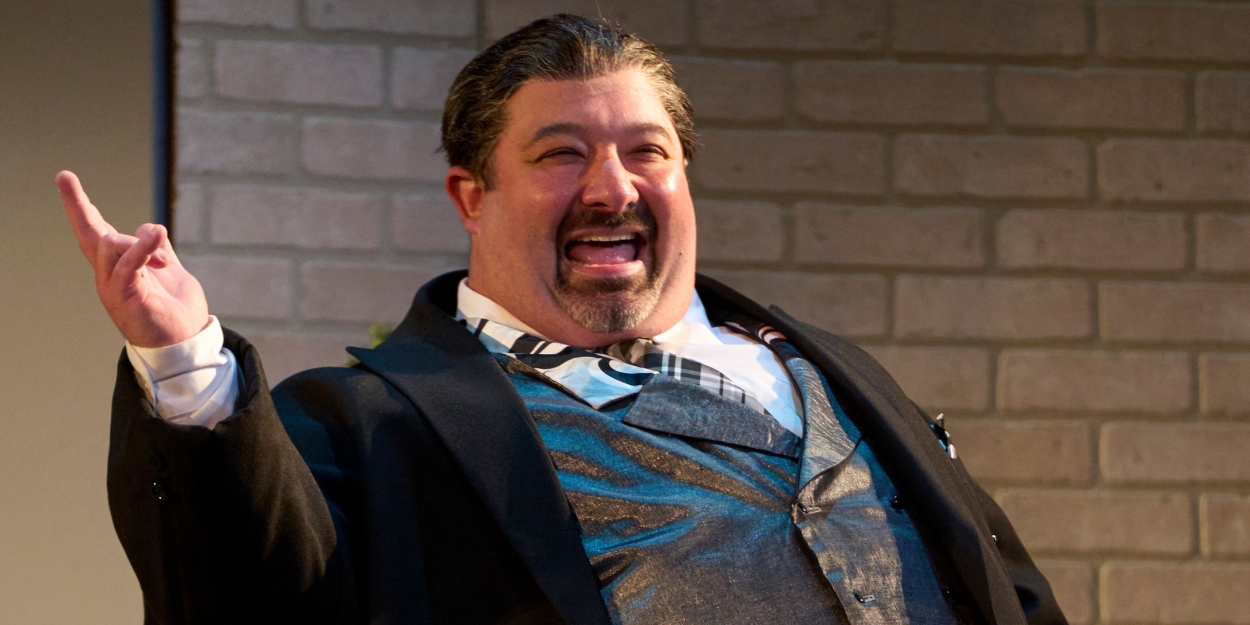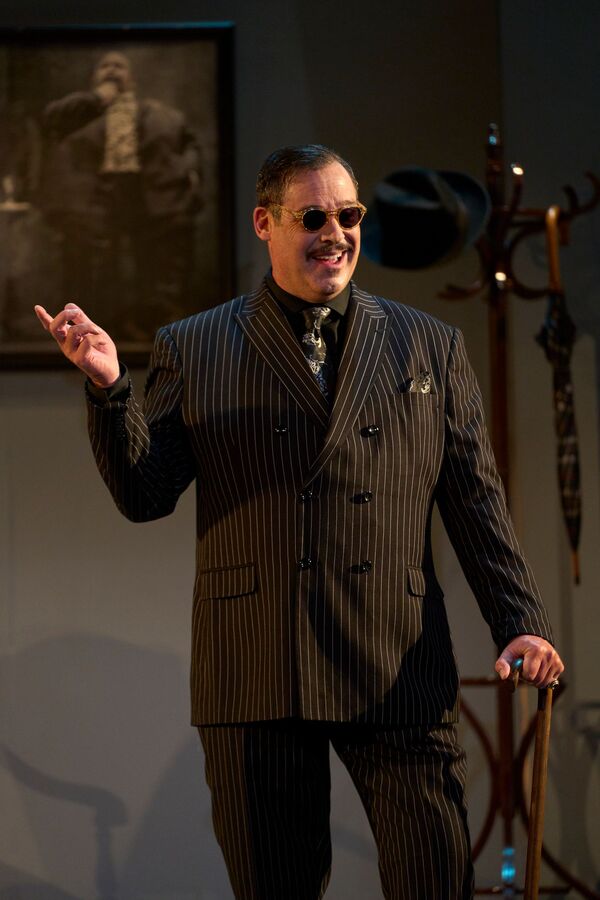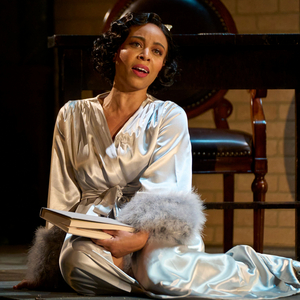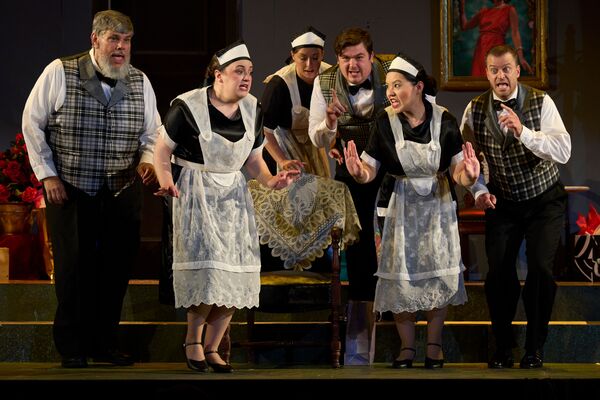Review: DON PASQUALE at Union Avenue Opera
"How can such beauty be so funny?" The production plays at Union Avenue Opera July 28 through August 5.

Scott Schoonover and his Union Avenue Opera have a long history (now twenty-nine years) of gathering remarkable operatic voices. Their current production of Donizetti’s Don Pasquale has voices that are astonishingly beautiful! It’s a work you should not miss! Two brilliant young stars—Christine Lyons (as Norina) and Namarea Randolph-Yosea (as Ernesto) will show you the real meaning of that mysterious term “bel canto”.
Don Pasquale, which premiered in 1843, is a classic opera buffa. It is the acme of comic operas in the bel canto style. Donizetti was a master of this genre, and Pasquale along with Donizetti’s L’elisir d’amore and Rossini’s Barbiere di Seviglia comprise the marvelous three that survive and thrive in today’s operatic canon.
The plot of Don Pasquale is ancient, tracing back thru Commedia dell’arte to the Greeks. Two young lovers yearn to be married, but a grumpy old guardian disapproves. A very clever trickster (friend or servant) helps them to foil the obstructing guardian. Happy ending!
Here we find young Ernesto in love with Norina, a beautiful young widow. But Ernesto is totally dependent on his uncle, Don Pasquale, whose estate he expects to inherit. But Pasquale insists that Ernesto marry a woman with some money, not Norina. Neither of these stubborn men will give in, so Pasquale decides to disinherit Ernesto and find a young bride for himself, thus enabling him to beget a lot of little heirs. Dr. Malatesta is Pasquale’s physician, but he is also good friends with Ernesto. It is he, Malatesta, who devises the clever scheme to thwart Pasquale and bring the young lovers together.
(It was an ancestor of the doctor’s, Giovanni Malatesta, who, in the 13th century, chose a rather bloodier way of resolving romantic disputes when he killed his wife and his brother for their adultery. Hence the story of Paolo and Francesca.)
Conductor Stephen Hargreaves lifts his baton to begin the gorgeous overture. It is a very kaleidoscope of music, with many quick shifts of form and mood and tempo. There’s a heartfelt cello solo, there’s frenzy, there’s sweet lilting melody, there’s chase—the whole spectrum. And it’s beautifully controlled.
When the lights come up and the story begins, it begins with a bang. The plot develops very quickly—and it all seems clear and modern and filled with humor. It’s all sung in Italian, of course, but the sub-titles are so readable and so deftly handled that one follows it all quite easily.
This production is set in Italy in the 1930s.
Now I’m not keen on transposing the eras of operas, or sicking operas on themes for which they were not intended. But I very quickly realized that the theme is still exactly Donizetti’s, and the time-shift is brilliant. Pasquale could be a Mafia don, Dr. Malatesta is the very image of the consiglieri. In this milieu, in this era the melodramatic emotions arising concerning duty to family and frustrated love are splendidly appropriate. Congratulations to stage director Jon Truitt and costumer Teresa Doggett for choosing this option and for making it happen so effectively.
That comic genius Andy Papas returns to the Union Avenue stage to sing the title role. His charming portrayals of the Lord High Executioner, the Modern Major General, Don Bartolo, and the jester Jack Point have made him a favorite in St. Louis. He’s a short round man, but with the agility of a sprite. His “Pasquale” is right up there with his very best.

With him we meet Peter Kendall Clark as Dr. Malatesta. All in black, with a cane and round black glasses he presents a striking image. Is he blind? No, no. The handsome and graceful Clark appears almost a gentle mockery of Marcello Mastroianni—even to the louche snap of the brim of his fedora. (And, of course, Mastroianni’s career was centered on a gentle mockery of himself.) Clark is also a very confident and gifted comic actor.

Then we meet Ernesto, the nephew. Namarea Randolph-Yosea brings to this role a voice I could listen to forever. Velvet smooth and sweet, sweet, sweet throughout his range. A voice designed to sing sad love songs to the moon. There is a uniform, subtle fine-toothed tremolo (or vibrato? or both?) that gives his voice a soft matte finish.
The doctor offers to find a bride for Pasquale. But (the trickster!) he presents Norina as the candidate. A phony notary writes the marriage contract and performs the service. Pasquale thinks himself married! (But neither the Law nor the Church would agree.) Before the ink has dried Norina changes from the shiest of maidens to the most domineering of shrews, spending her way rapidly through Pasquale’s wealth. He can only get rid of her by allowing his nephew to marry whomever he chooses. When the trick is revealed. Pasquale takes it all in good humor.

Now usually in bel canto comic operas it is the diva, the soprano at the center of the plot, who shines the brightest. She is challenged to execute some of the most difficult arias in all of opera, filled with sparkling cadenzas, articulated runs and trills, and all sorts of other decorations. Christine Lyons triumphs in the role of Norina. She’s effortlessly brilliant, vivacious, clever, and she so enjoys the game! And she too is gifted with that delicate tremolo quite matching Ernesto’s. What a pair!
Bel canto is a singing style dedicated to the sheer beauty of the voice. It stresses prosody, or the use of all the aspects of voice to support and amplify the mood and meaning of the lyric—emphasis, pauses, phrasing, rubato, attack and release, portamento, as well as various complex decorations. These two young singers show it all. Bravissimo!
How can such beauty be such fun?! The laughs abound. Pasquale and the Doctor have a patter-song duet that brings the house down. Then, relishing the applause and shamelessly milking the audience for more, they do a reprise at a circus tempo that would leave the Modern Major General in the dust—and with cigarettes dangling from their mouths! Joel Rogier plays a high-spirited phony notary who just bubbles with delight as he types up the marriage contract.
The chorus of servants adds much to the fun and joy, including a charming a cappella section.
The elegent set is by Laura Skroska. Teresa Doggett costumes the cast in black-and-white, save for a stunning red gown which is revealed when Norina drops her meek masquerade and appears as the sexy shrew. Patrick Huber designed the flexible lighting, with many focus-pools and follow-spots.
Again I congratulate stage director Jon Truitt. His concept, his blocking, his detailed comic bits, his lovely attention to “stage picture” were inspired. He made this show way funnier than it had to be.
“Don Pasquale” is another memorably beautiful and vastly enjoyable offering by the Union Avenue Opera
Reader Reviews
Videos

